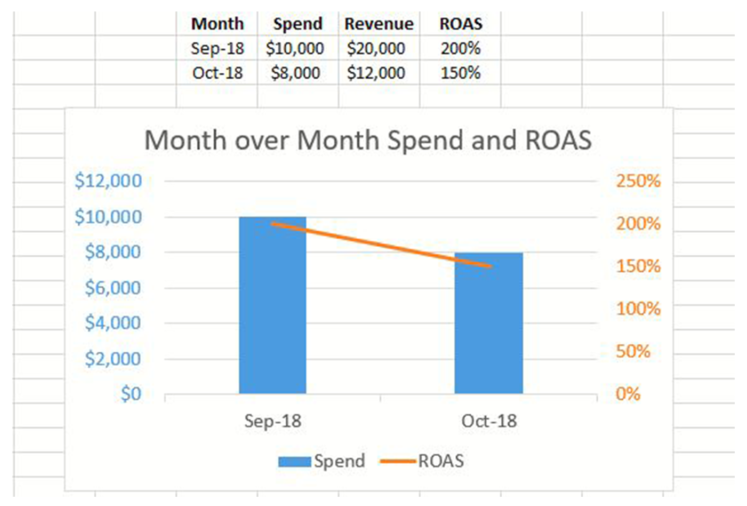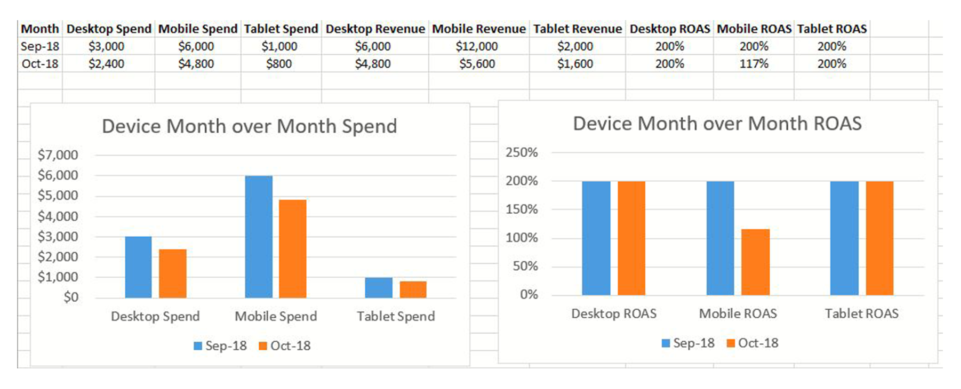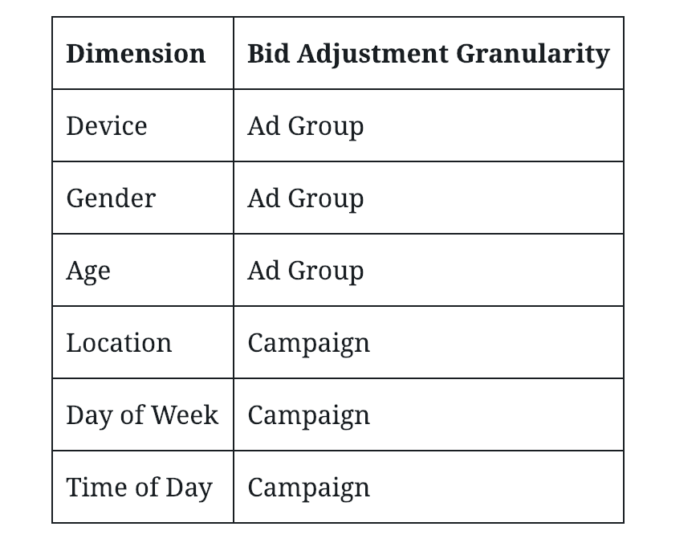Through a collection of curated stats, we explore how and why TikTok continues to be the talk of the digital advertising town.

By now, you’ve probably read Part I of this series: How to Identify Root Cause. You went through the steps, identified poorly performing accounts, campaigns, ad groups, keywords, and product groups. But while it was a great exercise, in the end, you likely came to the conclusion that performance was dropping everywhere -- and that includes numerous dimensions.
So you might be wishing you could get the two hours back you just wasted following our suggestions. However if performance is dropping everywhere, as opposed to just one segment of your program, it likely means there is a dimension that is performing worse than others -- and it’s up to you to identify what it is.
What is a Dimension?
At this point, you're probably wondering what do you mean by “dimensions?” Whenever you click on an ad, the click will either come from one of three devices -- a computer, phone, or tablet. This click will always come from a specific location and happen at a specific time of the day. These categories of device, location, and time of day are subsets of all possible dimensions from where clicks can originate.
How Do Dimensions Relate to Performance?
Certain categories within dimensions have more weight than others. When looking at device-level spend, you might see that 90% is attributed to ad clicks from computers. As a result, if performance from computers starts to drop, we would see performance of the whole account dropping in aggregate.
This example might illustrate the relationship between dimensions and performance more clearly: a 26-year-old male living in Los Angeles is searching for a “red shirt” on a Sunday at 5pm on his computer. He is desperate to find one, so he clicks on the first retail ad that pops up, and purchases a red shirt to be delivered to his apartment.
He has a 23-year-old female friend, who lives in New York, and is also searching for “red shirt” on a Tuesday morning at 11 a.m. on her phone. She clicks the same retail ad he did, but chooses not to purchase a red shirt because she didn’t like it.
The keyword from these two clicks are the same, but the following dimensions differ:
Maybe it's possible conversion rates for red shirts are higher on desktop than mobile. Or it’s possible there is a larger variety of red shirts for males than females. It's also possible the inventory of red shirts for this retail store varies by location, time of day and day of week.
The point is, there are LOTS of dimensions attributable to clicks, and it’s likely these dimensions exhibit variance in behavior. Because of this, you need to adjust bids based on dimensions in relation to how they tie into performance.
Now you have to do the dirty work of figuring which dimension is causing a drop in performance. With so many dimensions to choose from, you can potentially waste hours going down the rabbit hole. Prior to diving into exploration, asking the following can help you identify the poorly-performing dimension more quickly: Have any changes occurred recently that could have affected performance for a certain dimension?
Going back to the above “red t-shirt” example, there might have been a drop in available male t-shirts month-over-month due to dwindling inventory that caused Return on Ad Spend (ROAS) to decrease, yet males were still clicking on ads (but couldn’t convert because there was no inventory to buy).
Once you have a hunch about which dimension might be dropping performance, don’t hesitate to explore the data. Set a pre-post period and visualize the data to get a pulse on what is actually going on.
Example: Device Performance
Let’s say from September to October 2018, your ROAS dropped from 200% to 150%:

You strongly suspect the drop is coming from a specific device. The next step would be to split this chart by device to assess this theory:

At this point, it's very clear that the drop in performance is coming strictly from mobile devices. From here, you will have to dig one step deeper to figure out WHY performance is dropping in mobile. Maybe you changed your mobile landing page in October. Perhaps load time suddenly started slowing down due to architectural changes within the landing page. There are lots of possibilities, but if you dig deep enough, you’ll likely find a reason.
Dashboards, Dashboards, Dashboards
With so many dimensions, it’s hard to keep track of when a dimension is performing well or poorly. Yet, this knowledge can save you hours of time troubleshooting. This is where dashboards come in - they take a lot of work upfront to satisfactorily establish, yet will save you a lot of troubleshooting time in the long run.
With so many types of dashboard software available, it might be difficult to settle on one that satisfies your needs 100 %. However, at the end of the day, you can’t go wrong with most options. Examples of useful dashboard software include:
Internal Alerts
As useful as dashboards can be, it can be easy to forget to take action on the insights and information they provide. Setting up logic that returns alerts is also a solution that can help you flag poor performance,(e.g. if last week’s ROAS was 10% worse than the ROAS before that, send an alert) These alerts can either be set up locally on your computer or programmed into internal communication software such as Slack.
Although there might be false-positive alerts, if set up correctly, they should provide a net gain in troubleshooting time savings.
Once you determine which dimensions are failing, you need to make adjustments. In the device example above, you saw that mobile was performing worse than other devices. Because mobile was losing efficiency, you shouldn’t drive as much traffic toward mobile. So the next logical step here would be to drive traffic away, which you can do by lowering the bid adjustment for mobile.
For example, there might be an existing mobile bid adjustment of 50% for mobile in all your ad groups. You would want to drop this number down. How much you’d want to drop it completely depends on how much data is attached to mobile; if you're not sure how much to drop it by, drop it in 5% increments, and monitor closely day over day to see how these drops are affecting spend.
The granularity at which you can set bid adjustments varies by dimension. The following table illustrates the most granular you can set your dimensional bid adjustments at:

Any of these ad group dimensions can be set at the campaign level. But it’s very unlikely all ad groups will follow the same performance trends by dimension -- which is why you always want to make sure you are setting bid adjustments at the most granular level possible.
Understanding performance by dimensions is important for understanding how your PPC program operates, but more importantly, it’s essential for troubleshooting what might be causing a drop in performance. As we’ve seen in this series, a drop in performance can be caused by a number of different factors; being able to determine whether or not a specific dimension is contributing to this drop will help you determine the best next steps for action, paving the way for you to meet -- and exceed -- your PPC goals.
By now, you have become an expert at identifying the root of problems and what dimensions are failing. However, it still might not be enough to solve the overarching problem of how to bring performance back to expected levels because you might not be optimizing toward the most efficient metric in the first place. In Part III of our series, we cover how to address situations in which you might need to reassess how you are optimizing your program.